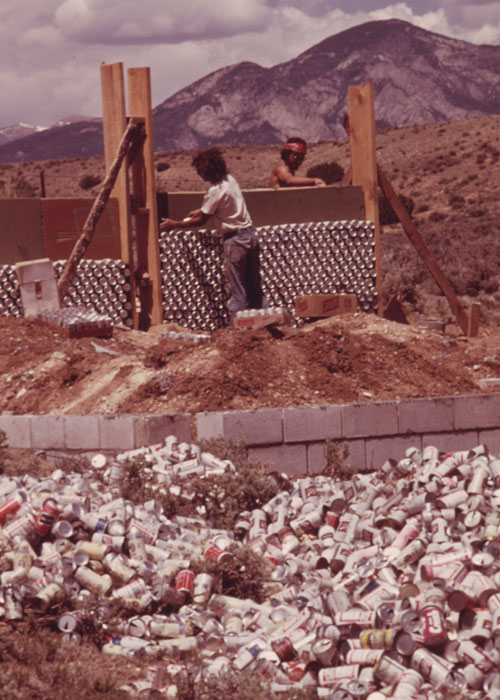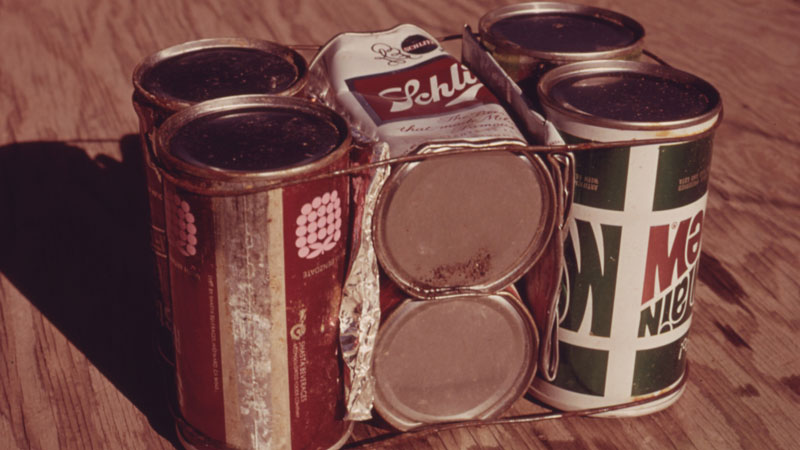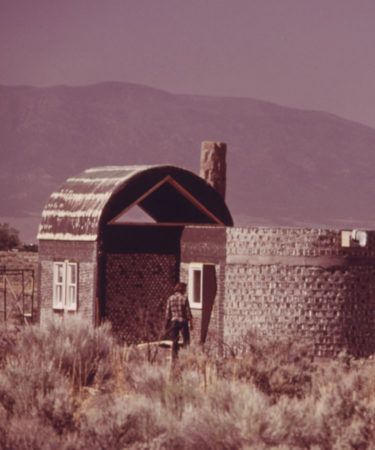There are countless hacks for repurposing empty beer cans. You can decorate your house with 50,000 of them as John Milkovisch did at his Houston home, or use them as planters, perfect for growing herbs and small succulents. While fun ideas, considering the newfound urgency in today’s sustainability minded culture, they’re not the easiest to scale up.
But in the 1970s, renegade architect and designer Michael Reynolds took his recycling skills to newfound heights. Using empty beer and soda cans as the base material, Reynolds built an entire house. In a similar vein, Heineken attempted something similar with bottles back in the early 1960s — though it shelved the plan.
The inspiration to use cans to build livable habitats first struck Reynolds after watching news reports about the country’s growing litter problem, and the rising cost of housing. “I thought this might be something we could do [to] take care of both problems at the same time,” Reynolds told The New York Times in April 1974.

Reynolds’ experiment began in 1972 in Taos, N.M., where he and his team constructed the Thumb House. Built with cans constructed into makeshift bricks, then mortared to form walls, the Thumb House was the first of its kind. To allow for the cans to support more weight, Reynolds created curved walls that formed pie-shaped rooms. The Thumb House also featured a rooftop lawn so residents could grow their own food. (According to Taos News, the house is still there today.)
The experiment inspired Reynolds to build more sustainable dwellings in northern New Mexico, a feat that required sourcing nearly 70,000 cans for each home. Since recycling had not become a regular household practice yet, Reynolds placed ads and purchased used cans from local bars and businesses.
“People are recognizing these things are natural resources, … that garbage can be useful and beautiful,” Reynolds explained to Business Insider in 2014. He became known as the “beer-can architect,” though despite the moniker, he also used tires and other “trash” in his structures.

During the 1970s, the Environmental Protection Agency documented Reynolds’ housing project in its photo series Documerica. One of the photographs depicts Reynolds’ famous wall of cans, a technique he employed that enabled the cans to be placed closer together with the added bonus of allowing for greater energy efficiency (the air inside the cans acted as an insulator).
Today, Reynolds is known for Earthship Biotecture, a design and construction company that continues the ethos of his original Thumb House, building homes from natural and recycled materials with energy conservation as a core principle. Not limiting his vision of sustainable housing to New Mexico, Reynolds has built earthships around the world.
For a firsthand understanding of Reynolds’ vision that also doubles as a cool vacation, there are numerous earthships available for rent on Airbnb.
